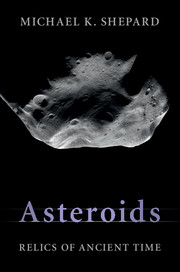Book contents
- Frontmatter
- Dedication
- Contents
- Preface
- Acknowledgements
- Brief list of asteroid and meteorite terms
- 1 It's a small world
- 2 A night at the zoo
- 3 It came from outer space
- 4 A day at the museum
- 5 The gambler's fallacy
- 6 Remembrance of things past
- 7 The ties that bind
- 8 Terra incognita
- 9 To your scattered bodies go
- 10 Scouts, sappers, and miners
- Glossary
- Bibliography
- Index
- References
8 - Terra incognita
Published online by Cambridge University Press: 05 May 2015
- Frontmatter
- Dedication
- Contents
- Preface
- Acknowledgements
- Brief list of asteroid and meteorite terms
- 1 It's a small world
- 2 A night at the zoo
- 3 It came from outer space
- 4 A day at the museum
- 5 The gambler's fallacy
- 6 Remembrance of things past
- 7 The ties that bind
- 8 Terra incognita
- 9 To your scattered bodies go
- 10 Scouts, sappers, and miners
- Glossary
- Bibliography
- Index
- References
Summary
Here be dragons.
Unknown
ARECIBO RADAR OBSERVATORY
Hidden deep in the northwestern rain forests of Puerto Rico, near the coastal city of Arecibo, is one of the technological wonders of man – the Arecibo Observatory, part of the National Astronomy and Ionosphere Center, or NAIC for short. The observatory is roughly an hour and a half drive west of San Juan at the terminus of highway PR-625. The last few miles of the trip wind precariously through small neighborhoods on narrow roads. The roads follow the hill and hollow karst terrain as a roller coaster might – up and down, left and right – and the effect on those inclined to motion sickness is just as wretched.
Because the topography is so rugged, you don't see any part of the enormous antenna until you pull up to the gate. Even then, the full effect isn't felt until you walk the hill to the Visitor Center, or are invited to visit the control room on the edge of the dish. Once there, though, the sight of it is powerful. Like a cybernetic prosthesis, the antenna dish appears to fit organically within the terrain.
The dish itself is not a solid object. Instead, hundreds of steel cables, parallel but separated from each other by a meter or so, are strung across a natural hollow and allowed to hang, creating a concave web. Nearly 40,000 lightweight aluminum screens, each about one by two meters, are set on top of the cables to create a giant, floating mesh. Each screen is precisely aligned by hand so that the entire structure deviates from a true spherical shape by less than a few millimeters anywhere.
The gauze-like metallic mesh has a couple of advantages over solid antennas. The telescope is designed to detect microwaves with wavelengths of tens of centimeters. Waves that large cannot pass through a fine screen mesh – it might as well be solid.
- Type
- Chapter
- Information
- AsteroidsRelics of Ancient Time, pp. 219 - 252Publisher: Cambridge University PressPrint publication year: 2015



